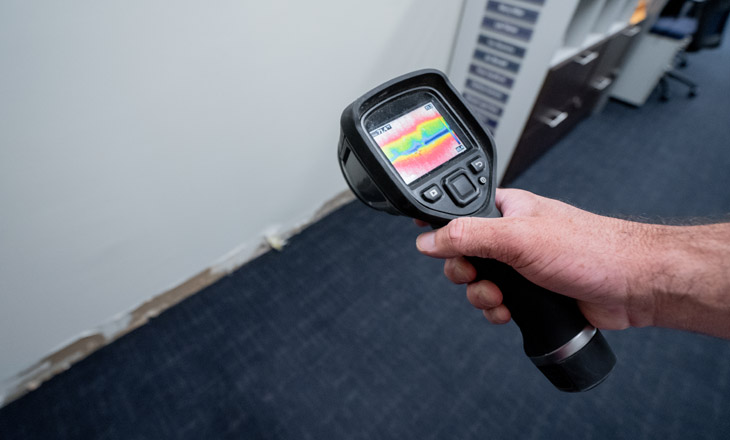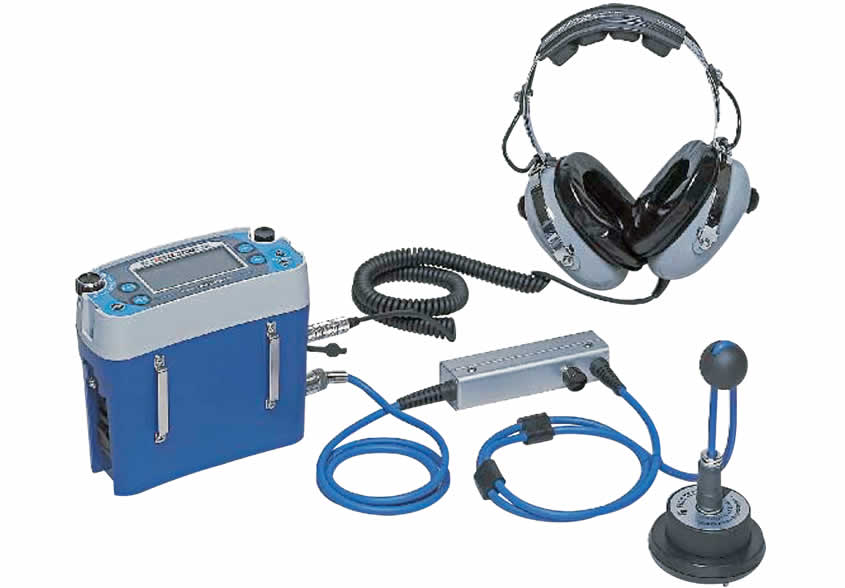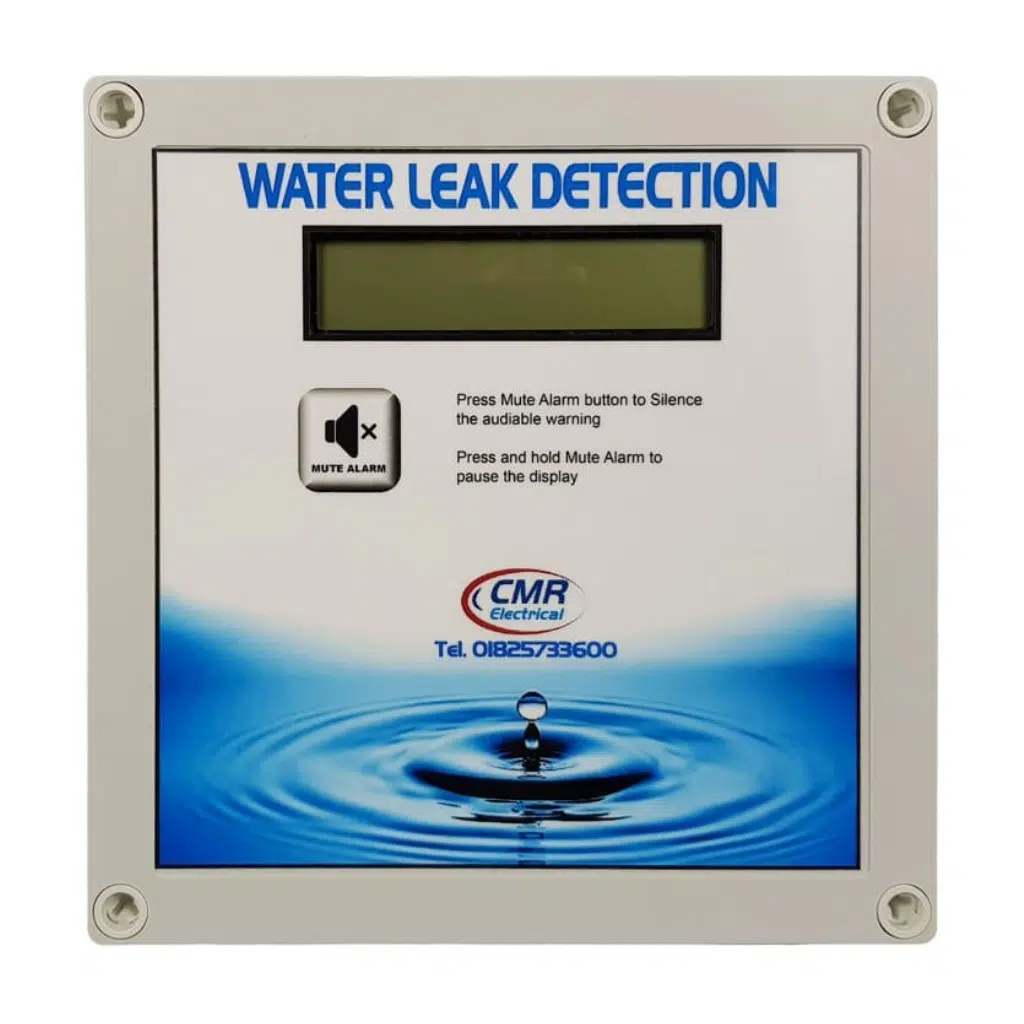Advanced Water Leak Detection Solutions for Your Home and Organization
Advanced Water Leak Detection Solutions for Your Home and Organization
Blog Article
Cutting-edge Solutions for Early Discovery of Water Leakages in Structures and Facilities
From innovative leakage discovery modern technologies to the deployment of IoT sensors for real-time monitoring, the landscape of leakage prevention is developing quickly. Automated water flow analysis systems are reshaping exactly how leaks are determined and resolved, leading the means for an aggressive strategy to water leakage discovery.
Advanced Leakage Discovery Technologies
Advanced leak discovery technologies, equipped with advanced sensors and algorithms, play a vital duty in swiftly identifying and pinpointing water leakages in numerous setups. These innovations employ a combination of acoustic, thermal, and electromagnetic sensing approaches to detect leakages properly. Acoustic sensors spot the sound of running away water, enabling precise localization of the leakage source. Thermal imaging discovers temperature changes triggered by water leak, offering another reliable method for leakage identification. Electro-magnetic sensing units can recognize modifications in electro-magnetic fields triggered by water, using yet another layer of leakage discovery ability.

IoT Sensors for Real-Time Tracking
In the realm of modern water leakage detection, the assimilation of IoT sensing units for real-time monitoring represents a pivotal improvement in enhancing proactive leakage discovery abilities. These sensing units supply continual surveillance of water supply, giving real-time data on water circulation prices, stress variations, and temperature level modifications. By leveraging IoT modern technology, these sensing units can detect also the tiniest anomalies in water use patterns, allowing very early recognition of possible leaks before they escalate right into significant problems.
IoT sensors transmit data to a centralized system, where innovative algorithms evaluate the details and produce signals or alerts when abnormalities are spotted. This real-time surveillance ability permits homeowner or center supervisors to immediately resolve leaks, lessening water damages, decreasing fixing prices, and conserving water resources.
Additionally, IoT sensing units can be incorporated with building administration systems, permitting automated feedbacks to spotted leakages, such as turning off water valves or triggering pumps to alleviate the effect of leaks. On the whole, the execution of IoT sensors for real-time monitoring considerably boosts the performance and performance of water leak discovery in buildings and infrastructure.
Machine Understanding Algorithms for Leakage Prediction

One key advantage of using machine understanding for leakage prediction is its ability to constantly discover and boost its accuracy in time. As even more information is accumulated and fed right into the formula, it can refine its predictions and adapt to altering problems, eventually increasing the dependability of leak detection systems.
In addition, equipment learning formulas can help in recognizing refined signs of leaks that may go undetected by standard monitoring approaches. water leak detection. By assessing complicated data embed in real-time, these algorithms can offer early cautions and notifies, enabling punctual treatment and preventative upkeep to mitigate prospective water damage and associated costs
Using Thermal Imaging for Leak Discovery
Thermal imaging technology offers a promising approach for finding water leakages in different you could look here systems and infrastructures. By utilizing infrared radiation and temperature variations, thermal imaging video cameras can determine concealed leakages that are not easily noticeable to the nude eye.
One of the crucial benefits of thermal imaging for leakage detection is its non-intrusive nature. Unlike standard techniques that might call for burglarizing walls or floorings to locate leaks, thermal imaging enables non-destructive testing. This not only saves time and reduces expenses but also minimizes disruption to the structure or framework being analyzed. Furthermore, thermal imaging can swiftly check big areas, providing an extensive overview of possible leakage sources in a timely fashion. Overall, the use of thermal imaging modern technology boosts the effectiveness and accuracy of water leakage detection, making it a useful tool for preserving the integrity of structures and frameworks.
Automated Water Circulation Analysis Equipments
Exactly how can automated water circulation analysis systems change the detection and monitoring of leaks in numerous systems and facilities? Automated water circulation analysis systems supply a positive approach to leak discovery by continuously monitoring water circulation rates and patterns. By developing standard data, these systems can swiftly identify inconsistencies that may suggest a leak, enabling punctual intervention to stop comprehensive damages.
These systems utilize sophisticated formulas to assess real-time data and give immediate notifies when abnormalities are detected, enabling for speedy activity to be taken. Additionally, automatic water circulation evaluation systems can be integrated with building administration systems or IoT systems, enhancing overall effectiveness and enabling remote tracking capacities.
Moreover, the information gathered by these systems can be utilized for predictive maintenance purposes, helping to identify prospective powerlessness in the framework before leaks take place. In general, the implementation of automated water flow analysis systems can considerably improve leakage discovery and administration methods, eventually resulting in informative post cost financial savings, lowered water wastefulness, and boosted sustainability in buildings and infrastructure.

Verdict
In conclusion, the integration of innovative leakage detection technologies, IoT sensors, device discovering formulas, thermal imaging, and automatic water circulation analysis systems supplies cutting-edge solutions for early discovery of water leakages in structures and framework. These innovations allow real-time tracking, prediction of leaks, and efficient discovery approaches to stop water damages and wastefulness. Carrying out these options can assist in preserving the stability and sustainability of water supply in various settings.
Report this page